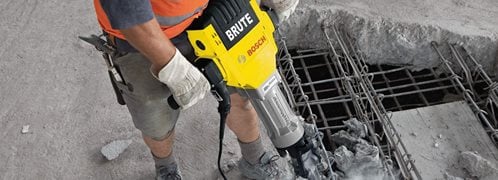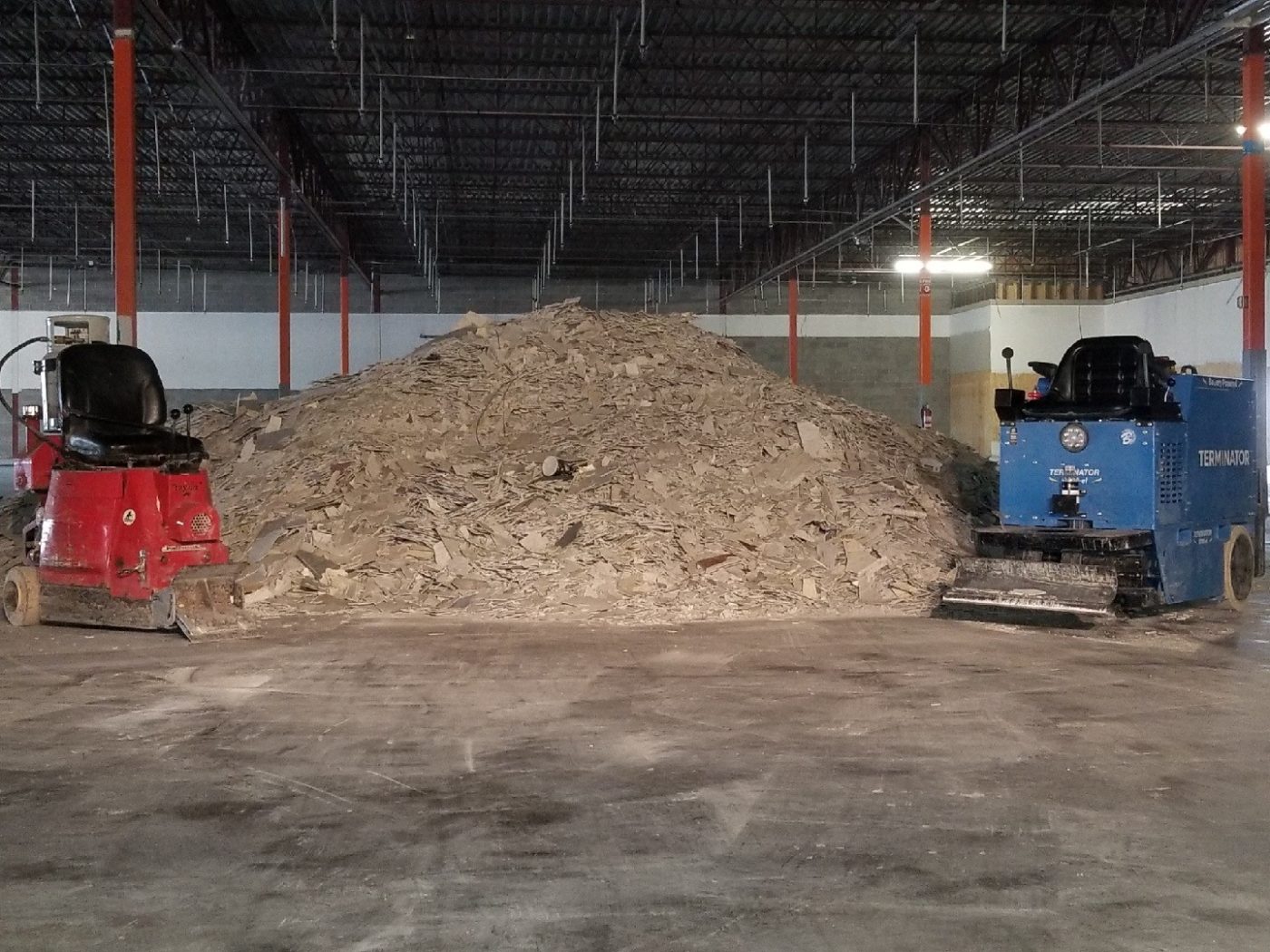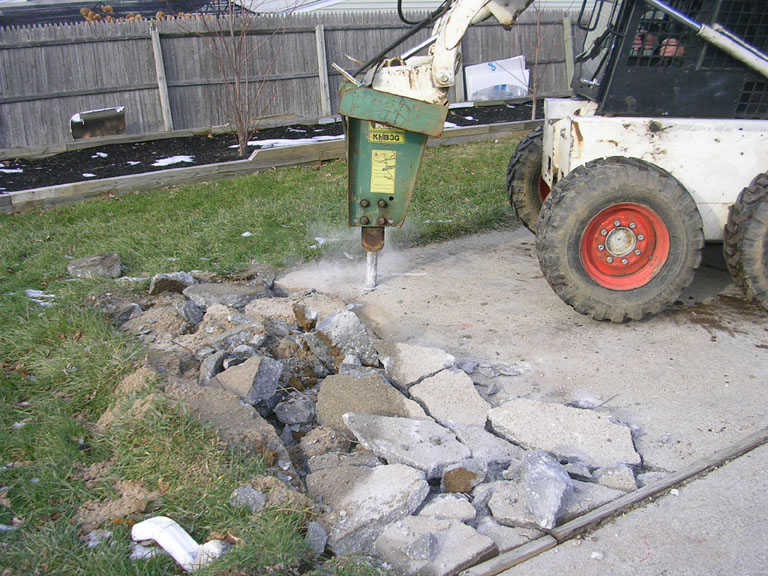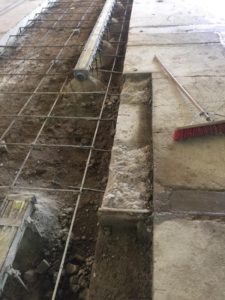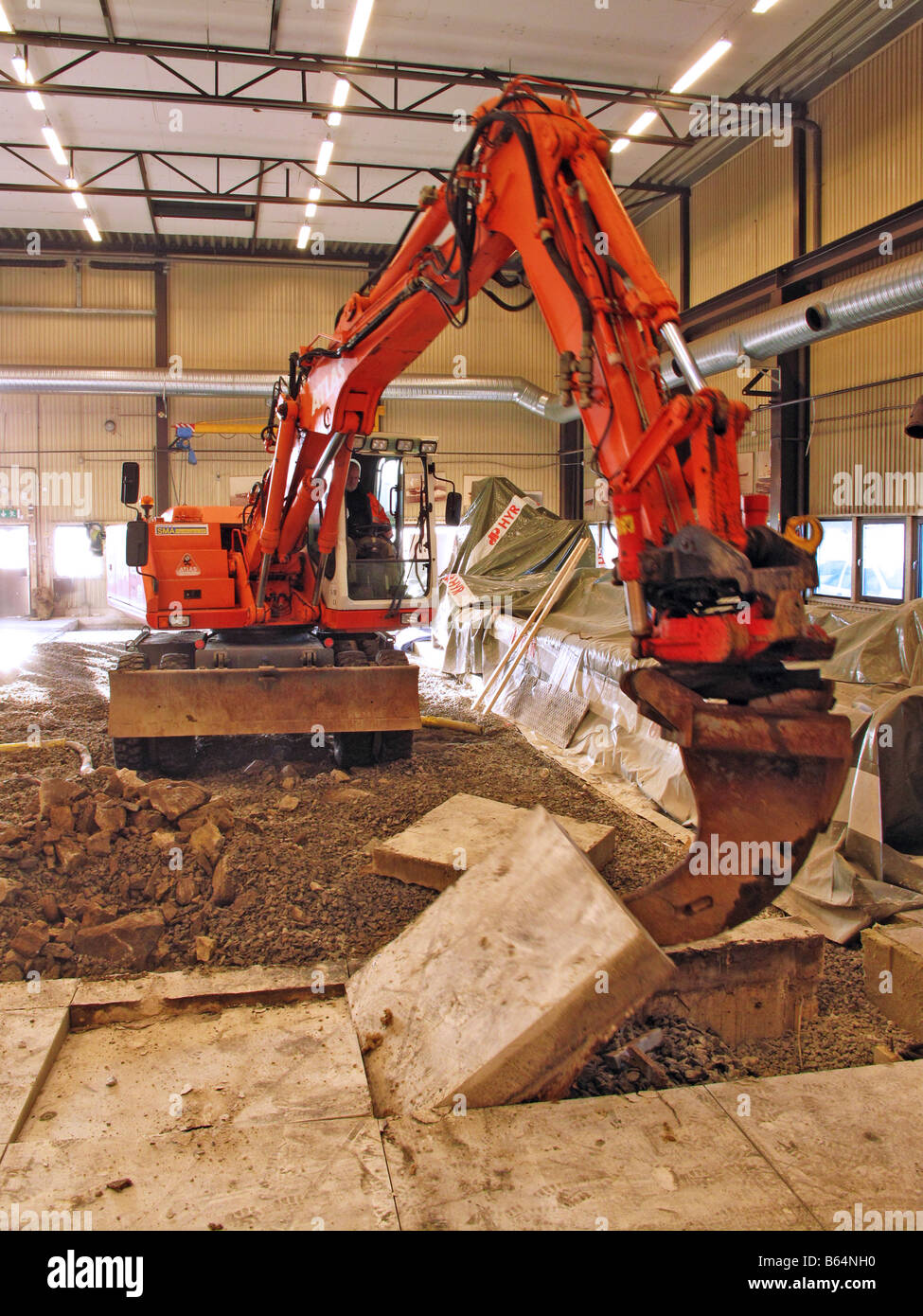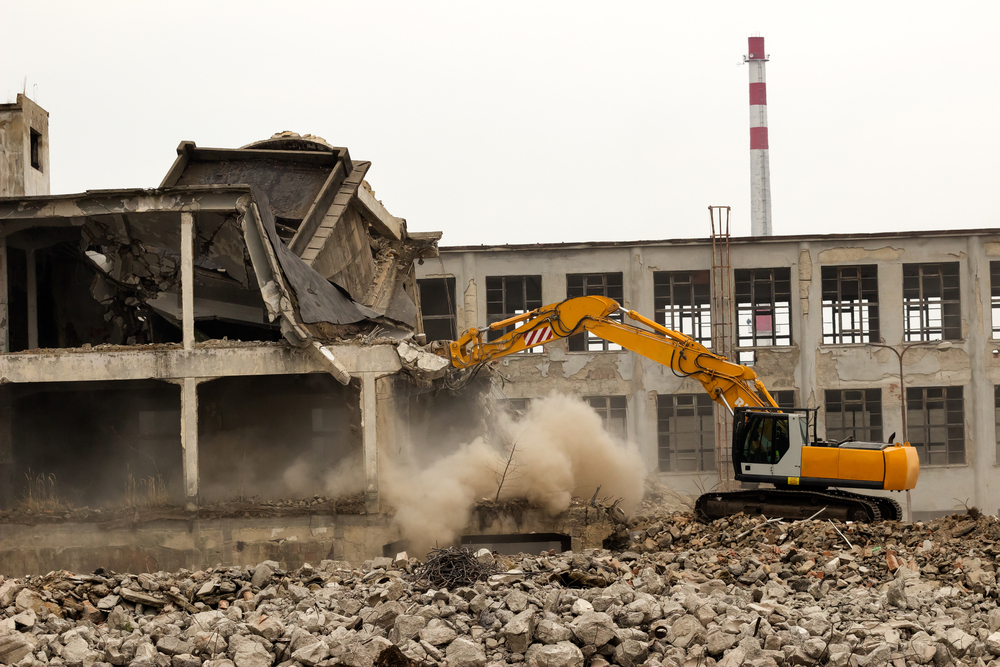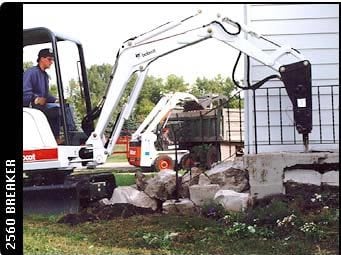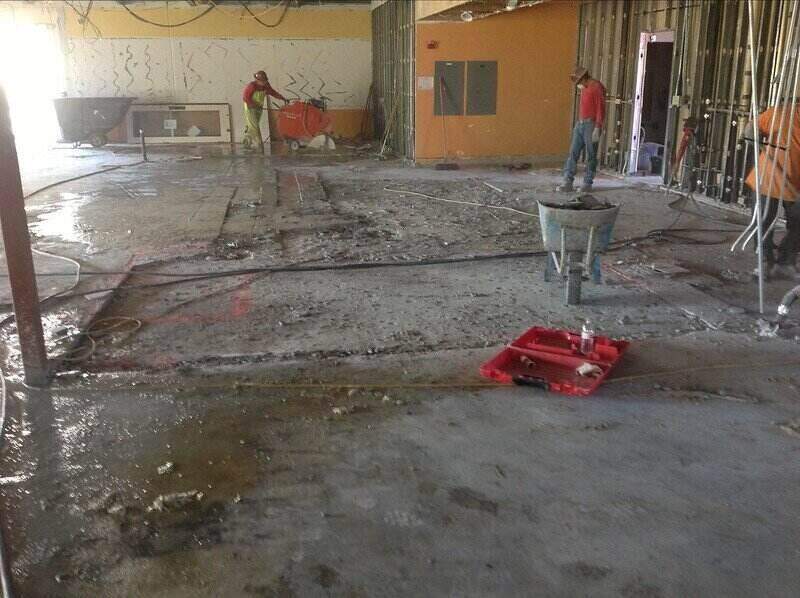Methods for Concrete Floor Demolition
Concrete floor demolition requires the use of various techniques and equipment to effectively break down and remove the concrete. This section explores some of the commonly used methods and equipment utilized in this process, including jackhammers, diamond saws, and hydraulic breakers.
Jackhammers:
Jackhammers, also known as pneumatic breakers, are widely used in concrete floor demolition due to their versatility and efficiency. These handheld tools deliver high-impact blows to the concrete surface, breaking it into smaller, more manageable pieces. Jackhammers are equipped with pointed or chisel-like attachments that allow for precise targeting and controlled demolition. They are particularly useful for demolishing small to medium-sized concrete floor areas.
Diamond Saws:
Diamond saws are another commonly employed tool for concrete floor demolition. These saws feature diamond-encrusted blades that can cut through concrete with ease. Diamond saws are available in various sizes and configurations, including handheld models and walk-behind machines. They are best suited for cutting through thick or reinforced concrete floors where jackhammers may be less effective. Diamond saws offer greater precision and control, ensuring clean cuts and reducing the risk of damage to surrounding structures.
Hydraulic Breakers:
Hydraulic breakers, also known as hydraulic hammers, are heavy-duty tools used for breaking down large and thick concrete floor sections. These powerful machines are typically attached to excavators or skid steer loaders, providing them with the necessary force and stability. Hydraulic breakers deliver high-impact blows to the concrete surface, shattering it into smaller pieces that can be easily removed. They are particularly beneficial for demolishing industrial or commercial concrete floors that require significant force for effective demolition.
Concrete floor demolition involves the use of various techniques and equipment to ensure efficient and safe removal of the concrete. Jackhammers, diamond saws, and hydraulic breakers are some of the commonly used tools in this process. Each method offers its own benefits and is chosen based on the specific requirements of the demolition project. By employing the appropriate techniques and equipment, concrete floor demolition can be carried out effectively while minimizing damage and maximizing productivity.

Safety Considerations During Concrete Floor Demolition
During the process of demolishing a concrete floor, it is crucial to prioritize safety measures and take necessary precautions to prevent accidents and injuries. The following guidelines highlight the importance of safety and outline the necessary steps to ensure a safe demolition process.
Wearing Protective Gear: One of the most important safety measures during concrete floor demolition is wearing appropriate protective gear. This includes hard hats, safety goggles, face masks, gloves, and steel-toed boots. These items provide protection against falling debris, dust, and potential injuries caused by sharp objects or heavy materials.
Securing the Area: Before starting the demolition process, it is essential to secure the area to prevent unauthorized access. Erecting barriers, fencing, or caution tapes around the work zone helps to keep bystanders and unauthorized personnel out of harm’s way. This ensures that only trained and authorized individuals are present during the demolition.
Proper Disposal of Debris: Disposing of the demolished concrete floor and other debris should be done in a safe and responsible manner. It is important to have designated areas for debris disposal and to follow local regulations and guidelines for waste management. This includes using appropriate containers or dumpsters, avoiding overloading them, and ensuring they are properly covered and sealed to prevent any accidents or environmental hazards.
Adhering to Safety Procedures: Following established safety procedures is crucial to maintaining a safe working environment during concrete floor demolition. This includes conducting a thorough risk assessment before starting the demolition, using the right tools and equipment for the job, and following proper techniques and guidelines for handling and removing concrete.
Regular Safety Inspections: Regular safety inspections should be carried out throughout the demolition process to identify any potential hazards or risks. This includes inspecting the condition of equipment, checking the stability of the structure being demolished, and assessing the overall safety of the work area. Any issues or concerns should be addressed immediately to ensure the safety of the workers and anyone in the vicinity.
Factors Influencing Concrete Floor Demolition Cost
The cost of demolishing a concrete floor can vary depending on several factors. This section will discuss some of the key factors that can impact the overall cost of the demolition process.
Size and Thickness of the Floor:
The size and thickness of the concrete floor play a significant role in determining the cost of demolition. Generally, larger and thicker floors require more time, effort, and resources to demolish. This can result in higher demolition costs. Conversely, smaller and thinner floors may be less costly to demolish.
Accessibility:
The accessibility of the concrete floor is another important factor to consider. If the floor is located in a tight or hard-to-reach area, it may require additional equipment or specialized techniques to demolish. This can increase the overall cost of the demolition process.
Presence of Reinforcement:
The presence of reinforcement within the concrete floor can also impact the cost of demolition. Reinforced concrete floors, which contain steel bars or mesh for added strength, can be more challenging and time-consuming to demolish compared to non-reinforced floors. This additional complexity can result in higher demolition costs.
Disposal Fees:
Disposing of the demolished concrete is another factor that influences the overall cost. Depending on local regulations and disposal options, there may be fees associated with properly disposing of the concrete debris. The distance to the disposal site and the quantity of concrete to be disposed of can also affect the cost.
It is crucial to consider these factors when estimating the cost of demolishing a concrete floor. By understanding the specific characteristics of the floor, its accessibility, the presence of reinforcement, and the potential disposal fees, accurate cost estimates can be made, allowing for effective budget planning.
Environmental Impact of Concrete Floor Demolition
Concrete floor demolition can have significant environmental implications that need to be addressed. One of the main concerns is the release of dust and debris during the demolition process. When concrete is broken down, it can create a large amount of fine dust particles that can be released into the air. These particles can pose a risk to human health if inhaled, as well as contribute to air pollution.
In addition to dust and debris, another potential environmental impact of concrete floor demolition is water contamination. During the demolition process, there is a risk of contaminants such as chemicals and metals being released into nearby water sources. This can have detrimental effects on aquatic ecosystems and potentially contaminate drinking water supplies.
To mitigate these environmental impacts, it is crucial to employ sustainable disposal methods for the debris generated from concrete floor demolition. Recycling and reusing concrete waste can significantly reduce the amount of material that ends up in landfills. Crushed concrete can be used as a base material for new construction projects, reducing the need for virgin aggregate extraction.
Furthermore, proper dust control measures should be implemented during the demolition process to minimize the release of dust particles. This can include the use of water sprays or dust suppression systems to keep the dust levels in check. Additionally, workers should wear appropriate protective gear to prevent inhalation of dust.
Addressing the environmental implications of concrete floor demolition is essential for sustainable construction practices. By implementing measures to control dust and debris, as well as utilizing sustainable disposal methods, we can minimize the negative impact on air and water quality, and work towards a more environmentally friendly approach to concrete floor demolition.
Duane Wrecking Co. – Interior concrete floor DEMO
Concrete Removal Services
Concrete Demolition
How to Perform Commercial Flooring Demolition Black Bear
Concrete floor demolition with excavator Stock Photo – Alamy
Dismantling the concrete floor: demolition machine destroys the concrete coating, close-up. repair work with the special equipment: machine for dismantling. drilling. no people
Overview of Concrete Demolition Methods
Concrete Demolition – Methods u0026 Equipment for Removing Concrete
Pricing Guide: How Much Does Concrete Removal Cost? – Lawnstarter
Related Posts:
- Polished Concrete Floors For Patios
- White Concrete Floor Tiles
- Acid Wash Concrete Floor Colors
- Concrete Floor Thickness For A Garage
- Concrete Floor For Bathroom
- Interior Concrete Floor Ideas
- Kitchen Stained Concrete Floors
- Concrete Floor Tile Thickness
- How To Stain Concrete Floors DIY
- DIY Concrete Floor Grinding


